Three-Dimensional Model-Based Line-of-Sight Analysis for Optimal Installation of IoT Monitoring Devices in Underground Mines
Abstract
:1. Introduction
2. Materials and Methods
2.1. Three-Dimensional Line-of-Sight Analysis Using Ray Casting
2.2. Smooth Communication Index and Design of Communication Device Installation Plan
3. Results
3.1. Preliminary Experiment in a Building
3.2. Line-of-Sight Analysis for Underground Mine
- Provisional setting of the starting point considering the surrounding environment;
- Determination of the starting point considering the SCI results for the target area;
- Analysis of LOS at the starting point;
- Determination of the secondary installation point, i.e., a point where the SCI is high and the LOS is connected from the starting point;
- LOS analysis at the secondary installation points;
- Determination of the third installation point and repetition of the same process;
- Investigation of LOS in the field using portable LiDAR and detailed positioning.
4. Discussion
5. Conclusions
Author Contributions
Funding
Institutional Review Board Statement
Informed Consent Statement
Data Availability Statement
Conflicts of Interest
References
- Korea Resources Corporation (KORES). Mine Disaster Statistics Data; KORES: Wonju, Republic of Korea, 2021; pp. 50–57. [Google Scholar]
- Centers for Disease Control and Prevention. Available online: https://www.cdc.gov/niosh/mining/works/statistics/factsheets/miningfacts2015.html (accessed on 17 May 2023).
- Prashanth, R.; Nimaje, D.S. Development of blast-induced ground vibration wireless monitoring system. In Proceedings of the 39th Application of Computers and Operations Research in the Mineral Industry (APCOM 2019), Wroclaw, Poland, 4–6 June 2019; pp. 1–8. [Google Scholar]
- Kim, S.M.; Choi, Y.; Suh, J. Applications of the open-source hardware Arduino platform in the mining industry: A review. Appl. Sci. 2020, 10, 5018. [Google Scholar] [CrossRef]
- Lee, W.H.; Kim, H.; Lee, C.H.; Kim, S.M. Development of Digital Device Using ZigBee for Environmental Monitoring in Underground Mines. Appl. Sci. 2022, 12, 11927. [Google Scholar] [CrossRef]
- Ledange, S.M.; Mathurkar, S.S. Robot based wireless monitoring and safety system for underground coal mines using ZigBee. Int. J. Electron. Commun. Eng. 2016, 3, 23–26. [Google Scholar] [CrossRef]
- Cekova, K.; Martinovska Bande, C.; Velkova, A.; Stojkovic, N. Mobile Sensor System for Detection of Toxic Gases in Mines. In Proceedings of the 10th ICT Innovations, Engineering and Life Sciences WEB, Metropol Lake Resort, Ohrid, Macedonia, 17–19 September 2018; pp. 112–123. [Google Scholar]
- Paluchamy, B.; Mishra, D.P.; Panigrahi, D.C. Airborne Respirable Dust in Fully Mechanised Underground Metalliferous Mines–Generation, Health Impacts and Control Measures for Cleaner Production. J. Clean. Prod. 2021, 296, 126524. [Google Scholar] [CrossRef]
- Alam, M.M.; Chakraborty, P.P.; Biswas, S.; Islam, A.J. Design of an intelligent helmet for mine workers. In Proceedings of the International Conference on Mechanical Engineering and Renewable Energy 2015, Chittagong, Bangladesh, 26–29 November 2015; pp. 1–5. [Google Scholar]
- Priyadarsini, V.; Verma, A.; Singh, M.; Netam, S.; Chandrakar, D. LabVIEW Based Real Time Monitoring System for Coal Mine Worker. J. Digit. Signal Process 2018, 6, 1–6. [Google Scholar]
- Dudwadkar, A.; Parkhi, N.; Kulkarni, M.; Shah, H.; Gupta, R. Wireless Mine Surveillance with Data Logging. Int. J. Adv. Res. Elect. Electron. Instru. Eng. 2016, 5, 2401–2406. [Google Scholar]
- Jo, B.; Khan, R.M.A. An Internet of Things System for Underground Mine Air Quality Pollutant Prediction Based on Azure Machine Learning. Sensors 2018, 18, 930. [Google Scholar] [CrossRef] [PubMed]
- Sadeghi, S.; Soltanmohammadlou, N.; Nasirzadeh, F. Applications of Wireless Sensor Networks to Improve Occupational Safety and Health in Underground Mines. J. Saf. Res. 2022, 83, 8–25. [Google Scholar] [CrossRef]
- Sudha, M.S.; Kumar, K.; Madhukesh, N.M.; Baig, N.; Naveen, T. Coal Mine Safety System Using Wireless Sensor Network. Int. J. Res. Eng. 2020, 3, 737–740. [Google Scholar]
- Baek, J.; Choi, Y. A new GIS-based Algorithm to Support Initial Transmitter Layout Design in Open-pit mines. Energies 2018, 11, 3063. [Google Scholar] [CrossRef]
- Ruzickova, K.; Ruzicka, J.; Bitta, J. A New GIS-compatible Methodology for Visibility Analysis in Digital Surface Models of Earth Sites. Geosci. Front. 2021, 12, 101109. [Google Scholar] [CrossRef]
- Auer, M.; Zipf, A. 3D WebGIS: From Visualization to Analysis. An Efficient Browser-based 3D Line-of-Sight Analysis. ISPRS Int. J. Geo-Inf. 2018, 7, 279. [Google Scholar] [CrossRef]
- Yang, P.P.J.; Putra, S.Y.; Li, W. Viewsphere: A GIS-based 3D visibility analysis for urban design evaluation. Environ. Plann. B 2007, 34, 971–992. [Google Scholar] [CrossRef]
- Wyse, S.V.; Hulme, P.E.; Etherington, T.R. Combining Laser Rangefinder and Viewshed Technologies to Improve Ground Surveys of Invasive Tree Distributions. Methods Ecol. Evol. 2022, 13, 734–742. [Google Scholar] [CrossRef]
- El Khaled, M.; Fortier, P.; Ammari, M.L. A performance study of line-of-sight millimeter-wave underground mine channel. IEEE Antenn. Wirel. Pract. 2014, 13, 1148–1151. [Google Scholar] [CrossRef]
- Forooshani, A.E.; Bashir, S.; Michelson, D.G.; Noghanian, S. A survey of wireless communications and propagation modeling in underground mines. IEEE Commun. Surv. Tut. 2013, 15, 1524–1545. [Google Scholar] [CrossRef]
- Boutin, M.; Benzakour, A.; Despins, C.L.; Affes, S. Radio wave characterization and modeling in underground mine tunnels. IEEE T. Antenn. Propag. 2008, 56, 540–549. [Google Scholar] [CrossRef]
- Rissafi, Y.; Talbi, L.; Ghaddar, M. Experimental characterization of an UWB propagation channel in underground mines. IEEE T. Antenn. Propag. 2011, 60, 240–246. [Google Scholar] [CrossRef]
- Mitra, N.J.; Nguyen, A. Estimating surface normals in noisy point cloud data. In Proceedings of the Nineteenth Annual Symposium on Computational Geometry, San Diego, CA, USA, 8–10 June 2003; pp. 322–328. [Google Scholar]
- Wang, L.; Wang, Z.; He, Z.; Gao, X. Research of physical condition monitoring system for the elderly based on Zigbee wireless network technology. In Proceedings of the International Conference on E-Health Networking Digital Ecosystems and Technologies (EDT), Shenzhen, China, 17–18 April 2010; pp. 32–35. [Google Scholar]
- Baek, J.; Choi, Y. Comparison of Communication Viewsheds Derived from High-Resolution Digital Surface Models Using Line-of-Sight, 2D Fresnel Zone, and 3D Fresnel Zone Analysis. ISPRS Int. J. Geo-Inf. 2018, 7, 322. [Google Scholar] [CrossRef]
- Seyedsalehi, S.; Pourahmadi, V.; Sheikhzadeh, H.; Foumani, A.H.G. Propagation Channel Modeling by Deep Learning Techniques. arXiv 2019, arXiv:1908.06767. [Google Scholar]
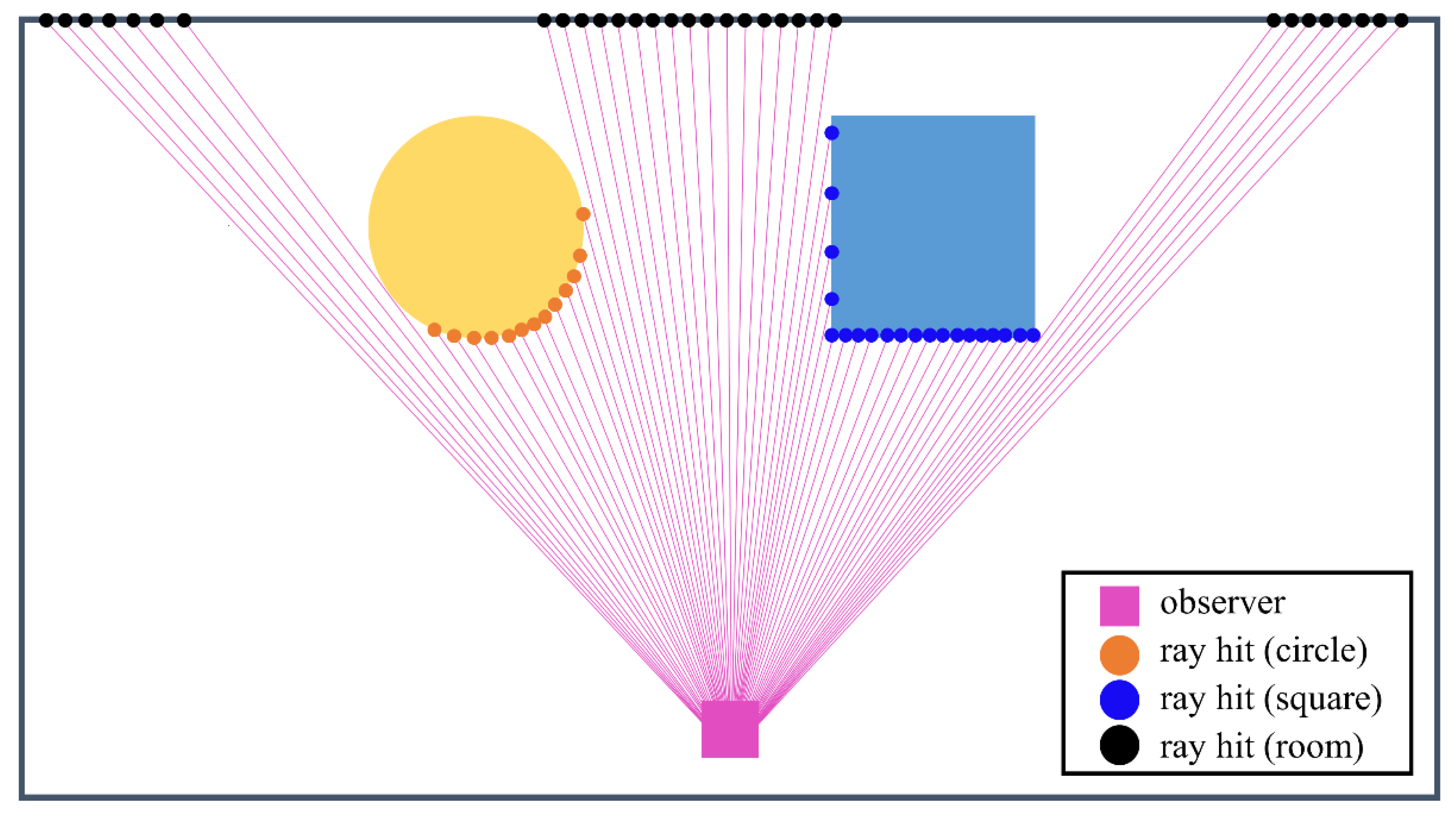
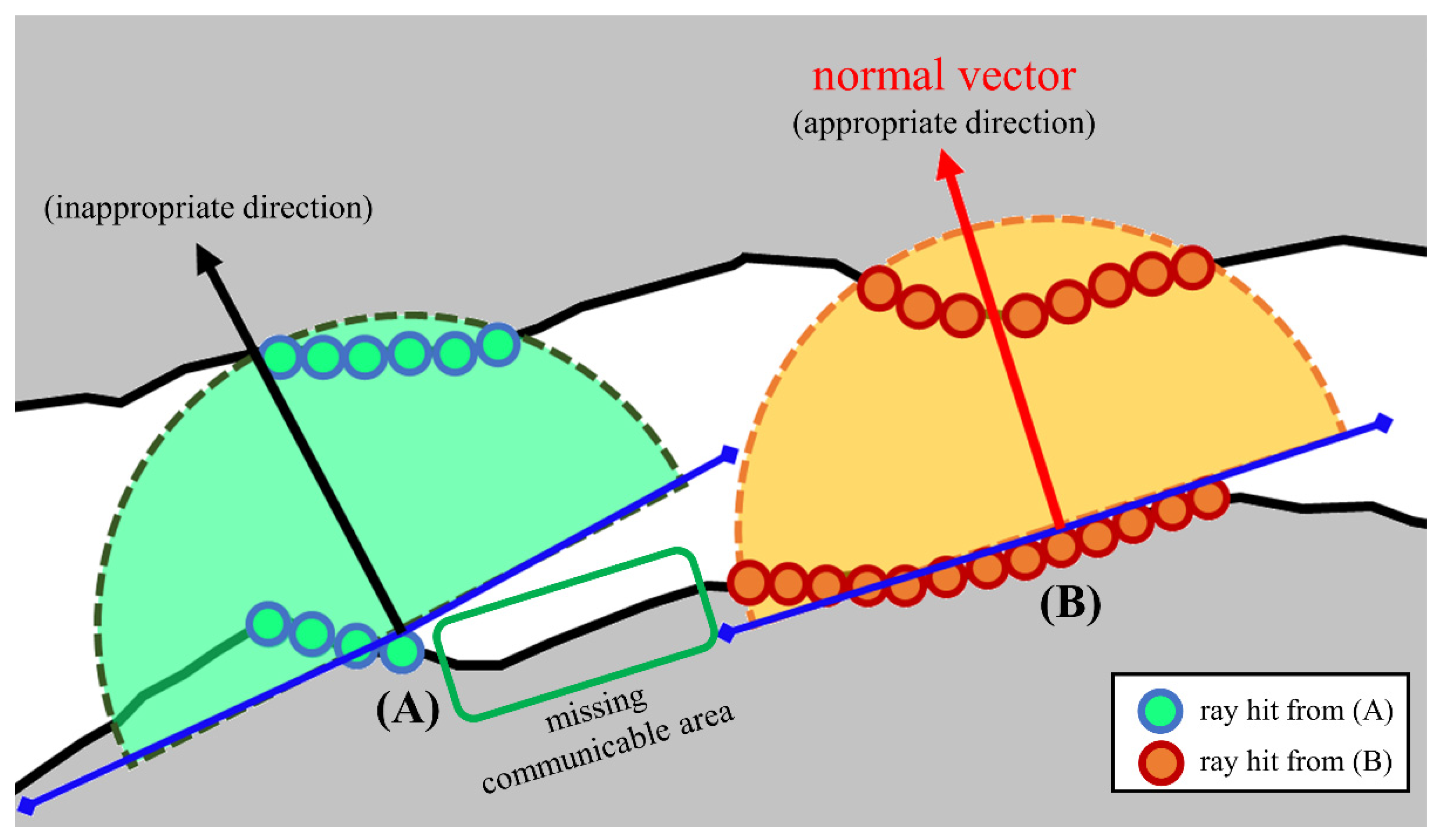

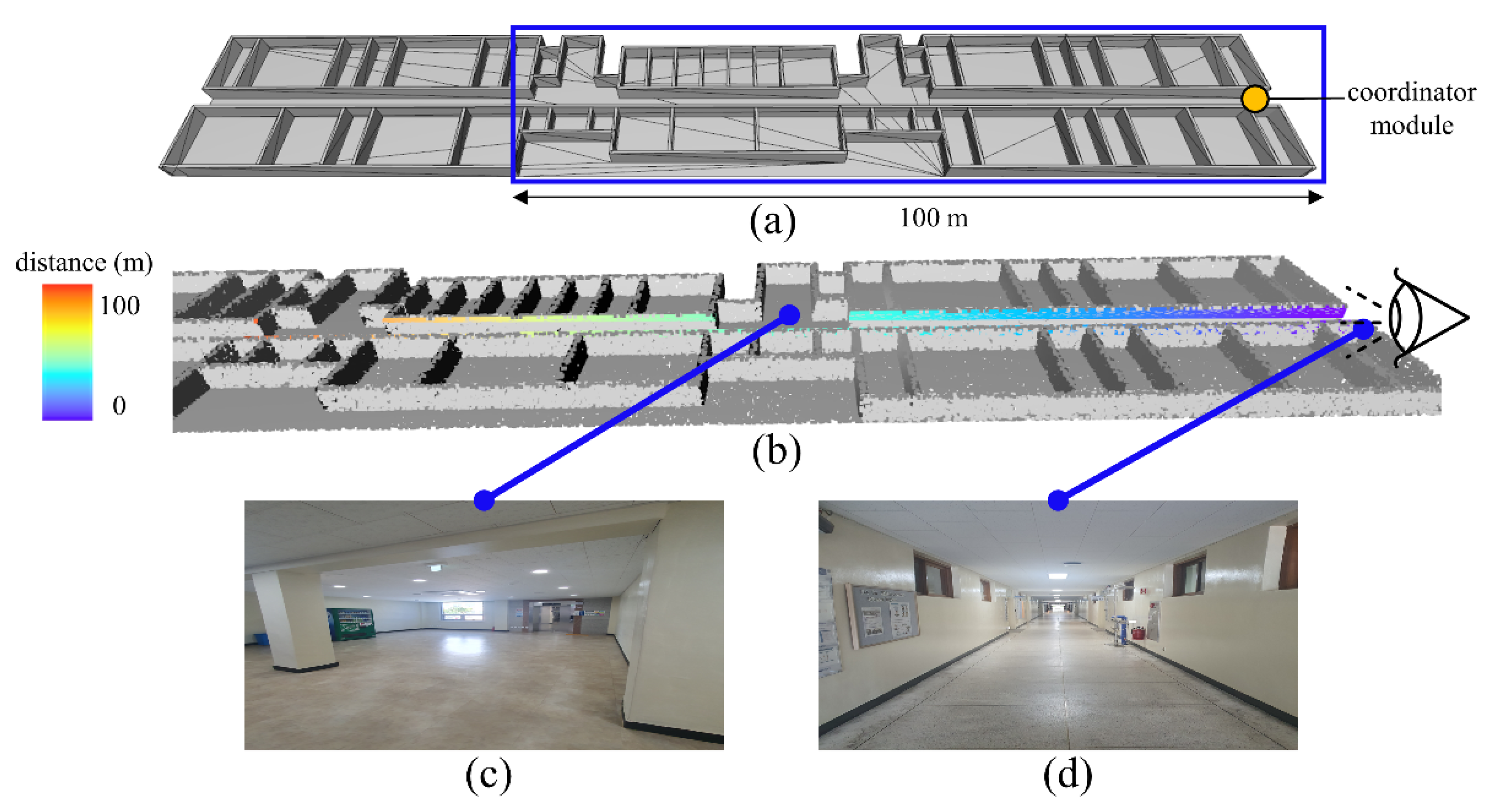

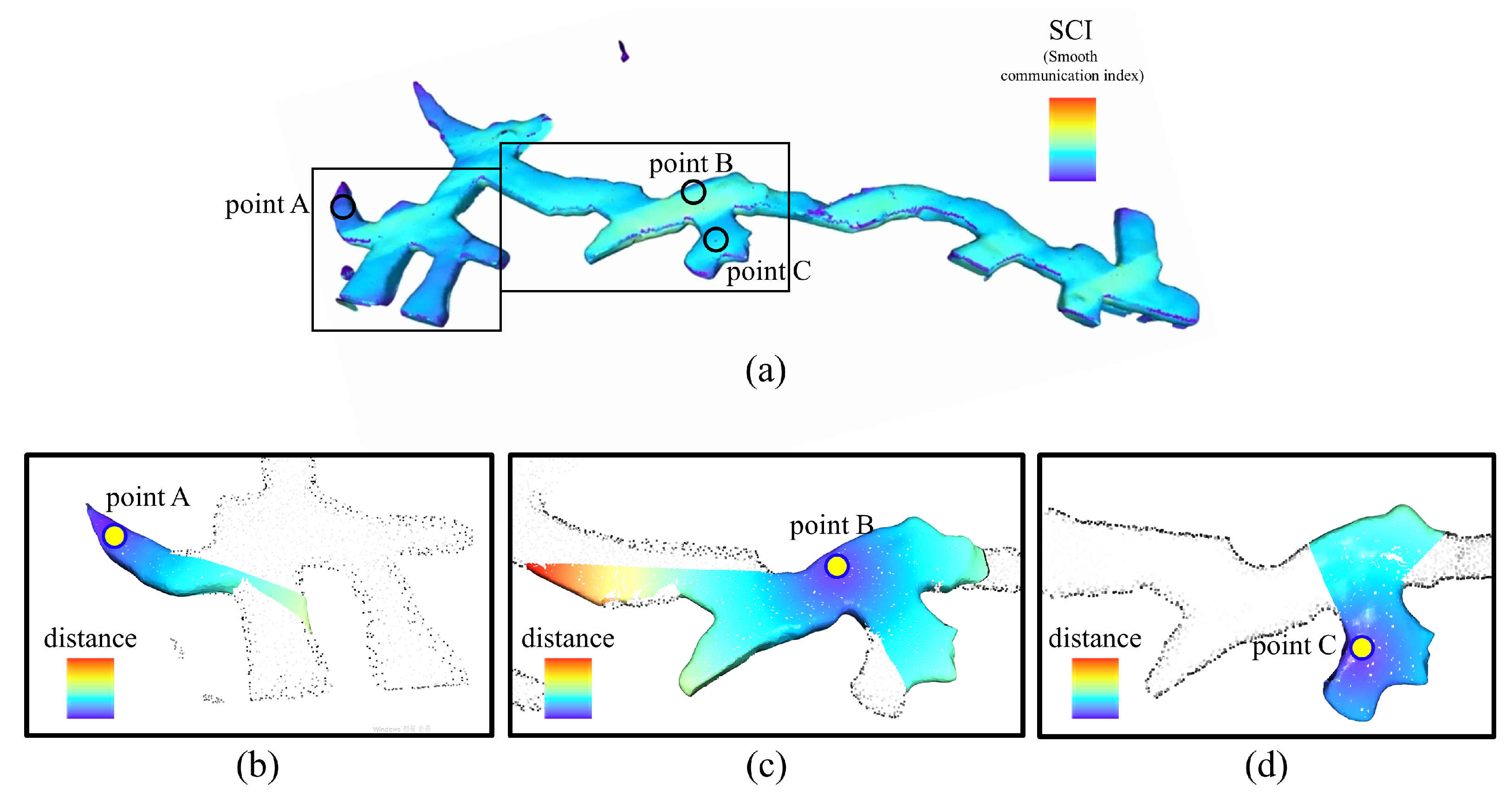
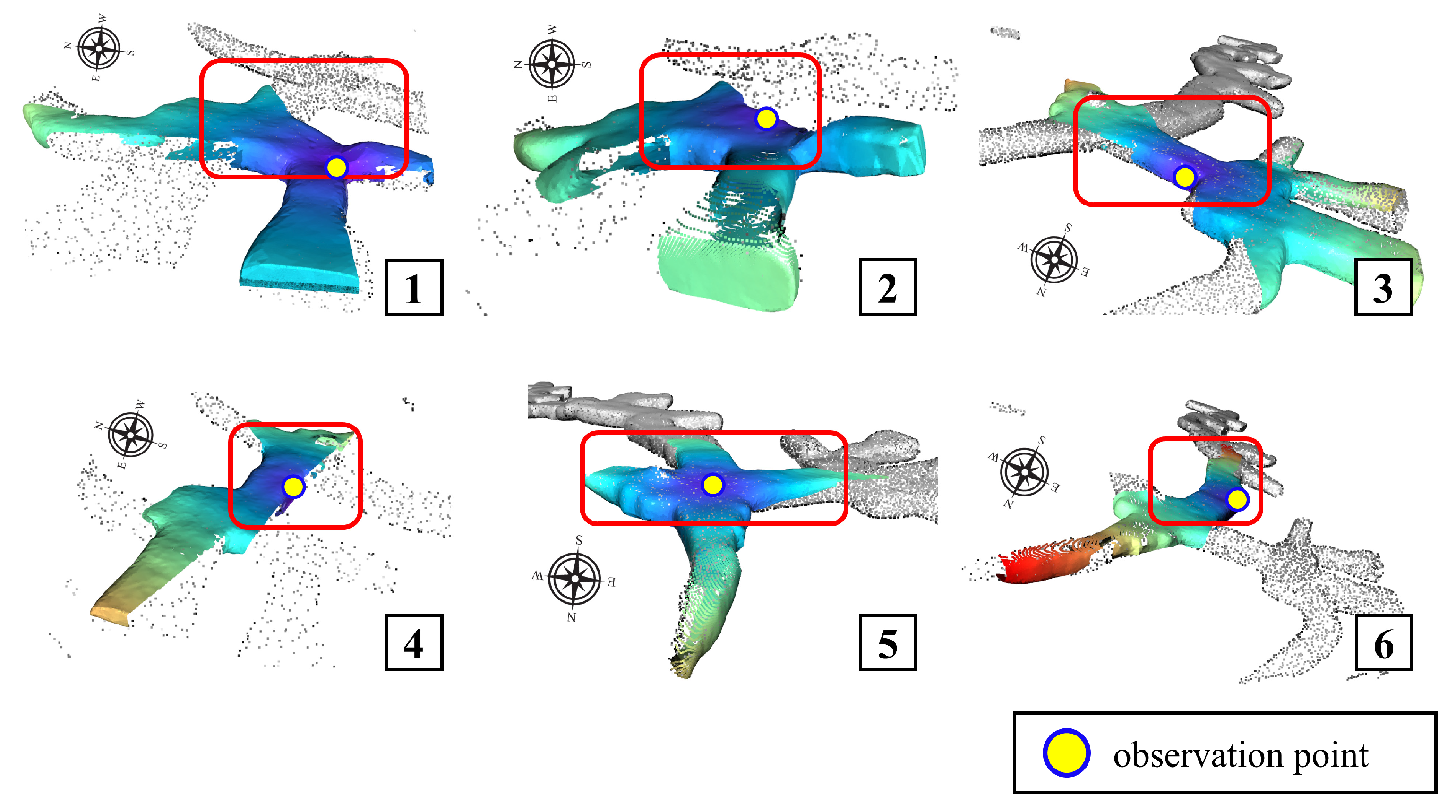
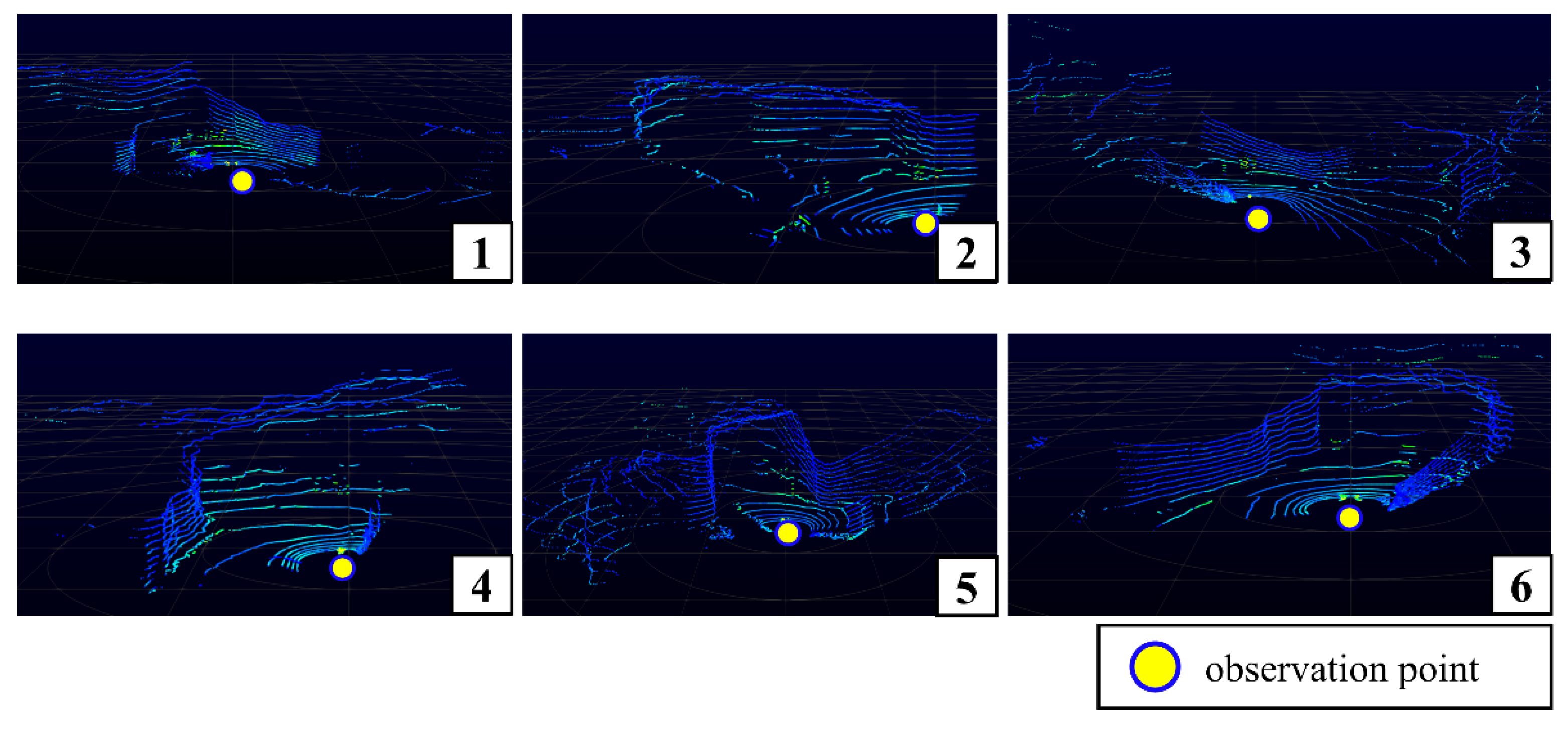
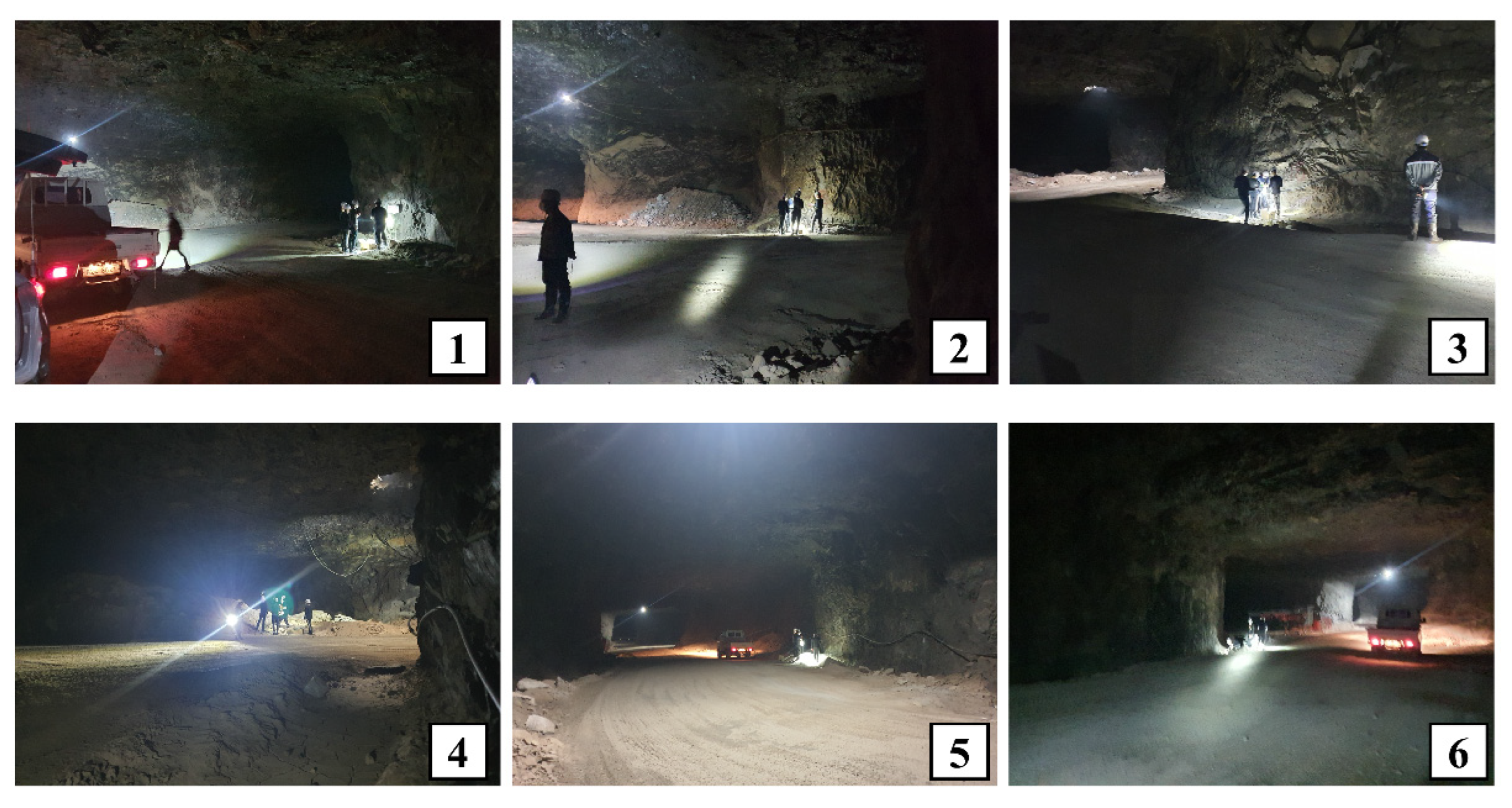

Disclaimer/Publisher’s Note: The statements, opinions and data contained in all publications are solely those of the individual author(s) and contributor(s) and not of MDPI and/or the editor(s). MDPI and/or the editor(s) disclaim responsibility for any injury to people or property resulting from any ideas, methods, instructions or products referred to in the content. |
© 2023 by the authors. Licensee MDPI, Basel, Switzerland. This article is an open access article distributed under the terms and conditions of the Creative Commons Attribution (CC BY) license (https://creativecommons.org/licenses/by/4.0/).
Share and Cite
Lee, W.-H.; Han, S.-S.; Kim, S.-M. Three-Dimensional Model-Based Line-of-Sight Analysis for Optimal Installation of IoT Monitoring Devices in Underground Mines. Appl. Sci. 2023, 13, 12535. https://doi.org/10.3390/app132212535
Lee W-H, Han S-S, Kim S-M. Three-Dimensional Model-Based Line-of-Sight Analysis for Optimal Installation of IoT Monitoring Devices in Underground Mines. Applied Sciences. 2023; 13(22):12535. https://doi.org/10.3390/app132212535
Chicago/Turabian StyleLee, Woo-Hyuk, Seong-Soo Han, and Sung-Min Kim. 2023. "Three-Dimensional Model-Based Line-of-Sight Analysis for Optimal Installation of IoT Monitoring Devices in Underground Mines" Applied Sciences 13, no. 22: 12535. https://doi.org/10.3390/app132212535
APA StyleLee, W.-H., Han, S.-S., & Kim, S.-M. (2023). Three-Dimensional Model-Based Line-of-Sight Analysis for Optimal Installation of IoT Monitoring Devices in Underground Mines. Applied Sciences, 13(22), 12535. https://doi.org/10.3390/app132212535







